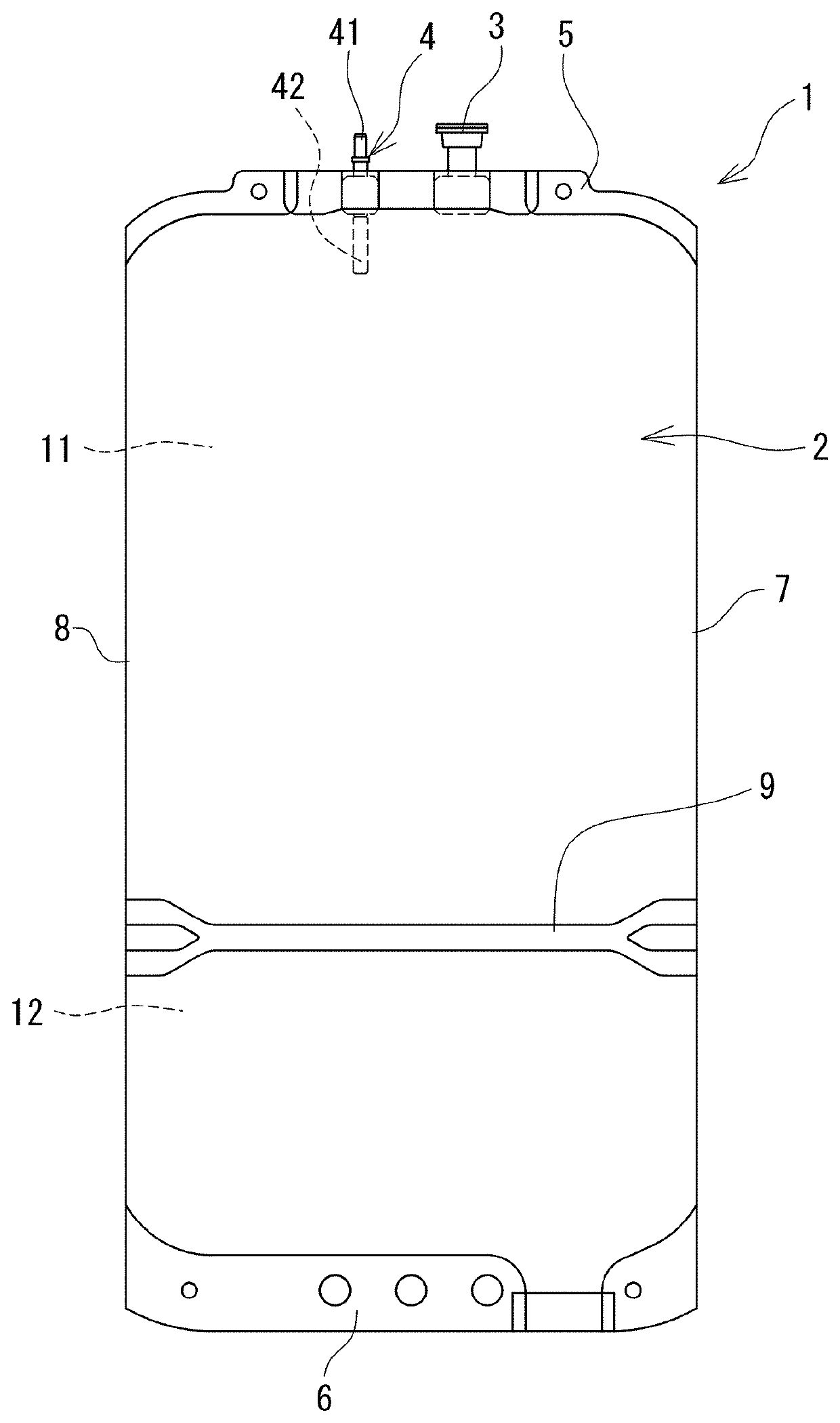Biocompatible peritoneal dialysate
a dialysate and biocompatibility technology, applied in the field of peritoneal dialysate, can solve the problems of increased risk of peritonitis due to bacterial penetration, inability to obtain sustained water removal effect, prolonged fever/abdominal pain, etc., and achieve excellent biocompatibility and improve the stability of icodextrin
- Summary
- Abstract
- Description
- Claims
- Application Information
AI Technical Summary
Benefits of technology
Problems solved by technology
Method used
Image
Examples
example 1
[0040]A first solution was prepared by dissolving 150.0 g of icodextrin and 3.745 g of sodium chloride in 1680 mL of water for injection. In addition, a second solution was prepared by dissolving 6.955 g of sodium chloride, 8.960 g of sodium lactate, 0.5140 g of calcium chloride, and 0.1016 g of magnesium chloride·hexahydrate in 320 mL of water for injection.
[0041]As the flexible bag, a multi-chamber container made of polypropylene [Midpeliq (registered trademark) (manufactured by Terumo Corporation)] was prepared. 1680 mL of the first solution was filled in the first chamber provided with the discharge port of the multi-chamber container and 320 mL of the second solution was filled in the second chamber. The multi-chamber container filled with a liquid was provided in a three-way bag made of polypropylene / nylon / polypropylene and deaerated and packaged. Thereafter, the heating sterilization (121° C., 30 minutes) was performed using an autoclave.
[0042]The pHs of the sterilized first ...
example 2
[0043]A first solution was prepared by dissolving 156.0 g of icodextrin and 3.745 g of sodium chloride in 1680 mL of water for injection. In addition, a second solution was prepared by dissolving 6.955 g of sodium chloride, 8.960 g of sodium lactate, 0.5140 g of calcium chloride, and 0.1016 g of magnesium chloride·hexahydrate in 320 mL of water for injection. 840 mL of the first solution and 160 mL of the second solution were filled, heated, and sterilized under the same conditions as the Example 1. The pHs of the sterilized first solution and second solution and the mixed solution (peritoneal dialysate) were measured. The pH of the first solution was 4.8, the pH of the second solution was 7.0, and the pH of the mixed solution was 6.4.
example 3
[0044]A first solution was prepared by dissolving 142.0 g of icodextrin and 3.745 g of sodium chloride in 1680 mL of water for injection. In addition, a second solution was prepared by dissolving 6.955 g of sodium chloride, 8.960 g of sodium lactate, 0.5140 g of calcium chloride, and 0.1016 g of magnesium chloride·hexahydrate in 320 mL of water for injection. 1680 mL of the first solution and 320 mL of the second solution were filled, heated, and sterilized under the same conditions as the Example 1. The pHs of the sterilized first solution and second solution and the mixed solution (peritoneal dialysate) were measured. The pH of the first solution was 5.0, the pH of the second solution was 6.9, and the pH of the mixed solution was 6.5.
PUM
| Property | Measurement | Unit |
|---|---|---|
| pH | aaaaa | aaaaa |
| pH | aaaaa | aaaaa |
| pH | aaaaa | aaaaa |
Abstract
Description
Claims
Application Information
 Login to View More
Login to View More - R&D
- Intellectual Property
- Life Sciences
- Materials
- Tech Scout
- Unparalleled Data Quality
- Higher Quality Content
- 60% Fewer Hallucinations
Browse by: Latest US Patents, China's latest patents, Technical Efficacy Thesaurus, Application Domain, Technology Topic, Popular Technical Reports.
© 2025 PatSnap. All rights reserved.Legal|Privacy policy|Modern Slavery Act Transparency Statement|Sitemap|About US| Contact US: help@patsnap.com

